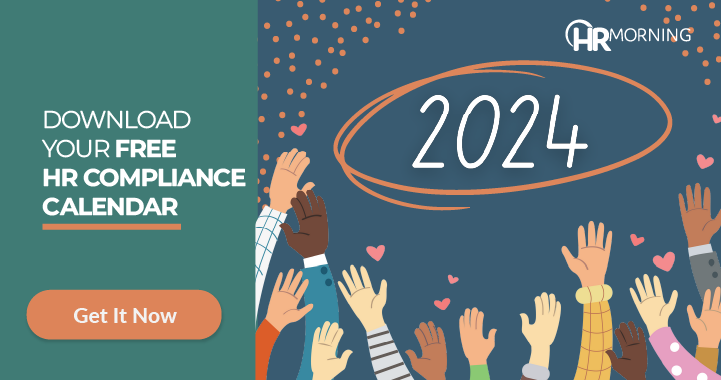HR pros always want ways to improve the employee experience. And sometimes the best ideas are already right under your nose.
That’s right: You don’t have to come up with a flashy, new employee experience plan to boost retention.
Here are five ways to capitalize on the good things that already exist – but are sometimes overlooked – to improve the employee experience in your organization.
Give time to improve the employee experience
“Time” has been a focus in talks about the employee experience since the pandemic – flexible time, separation time, balanced time. This year, try to give employees more “face time” (in person or on video) to improve the experience.
Managers will want to plan regular one-on-one meetings to listen to their experiences.
“Allow them to guide the conversation and ask questions that give them the space to freely speak their mind,” says Laura Andress, Chief People Officer at Arvest Bank, which touts an average employee tenure of 10-plus years, more than double the national average.
Move beyond “gripe sessions” and ask flat-out what they enjoy, what can make their work experience more valuable and what they’d like to be part of.
“Your gift of time spent truly listening to them, and then taking actionable steps based on your conversation is much more valuable to them than a $5 gift card any day,” says Andress.
Lean in to your values
Boy, it’s been a tumultuous year. It seems social, political and environmental issues erupt every week. And employees care about those issues. Still, they all don’t want it to spill over into the workplace.
In fact, about half don’t want their company leaders to speak out on societal issues, according to a Qualtrics study. Specifically, only about 4% want to hear from leaders on reproductive issues, constitutional rights and politics. But nearly 40% want to hear from their employers on work issues such as well-being, wages and worker safety.
So, you’ll want to lean into your “people” values when it comes to societal issues as a way to improve the employee experience. Try to offer unbiased support through the complexity.
“When it comes to divisive policy issues and debates, a shared set of meaningful values can be a good place to find some common ground,” says Qualtrics Chief People Officer Julia Anas. “This is an opportunity for all leaders to lead with heart, and show respect and empathy by creating space for all perspectives. Every leader, employee and workplace is different, but if we can all rally around the basics – integrity, respect, safety and wellness – it’s going to enhance the employee experience and strengthen the organizational culture, even when we don’t agree about every issue.”
Focus on connection
People crave connection again. And a lack of connection has messed with many employees’ mojo. Nearly 60% of employees in a Workhuman survey said part of the reason they’re burned out is they don’t connect with colleagues enough.
For the most part, people know how to connect when they’re together. They might start talking about a work-related, common topic, but the real bonding happens when they talk about their lives, families, passions, accomplishments and hopes.
“Before the pandemic, company culture was often associated with coffee and free swag – the perks a company provided. Now that employees have gone some years working from home many of those office perks disguised as culture are being put to the test,” says Niamh Graham, SVP of Global Human Experience at Workhuman, “Sustaining culture in a hybrid or fully remote environment is vital, and leaders have to be much more deliberate in communicating how each employee contributes to the overarching mission.”
So find new – or re-establish – ways to help people connect more often to improve the employee experience. Open common areas again. Promote existing Employee Resource Groups (ERGs). Even better, start a initiative to recruit employees to create new, far-reaching ERGs.
Pursue purpose
What’s the purpose? It’s a question often asked before a meeting or about a project. And if it’s asked – and more importantly, answered – more frequently about employees’ work, it can help them have a more positive experience at work.
We can take that advice on authority from one of the most purpose-driven organizations: St. Jude Children’s Research Hospital, which treats the toughest childhood cancers and pediatric diseases, usually at no cost to the family through its fundraising and awareness organization ALSAC.
But your organization doesn’t have to change course and become a non-profit to improve the employee experience. Instead, spend more time focusing on your purpose and helping employees connect what they do with positive effects on the company, customers and community.
“Every organization has its own culture that emerges from its values and what it believes in – that’s what makes it unique. That is how employers across industries can create working environments with purpose that encourage engagement – by empowering employees to share their ideas, embracing their unique perspectives and encouraging continuous growth,” says Annette Green, Chief People Officer at ALSAC/St. Jude Children’s Research Hospital.
Try to host a “Purpose Summit” once or twice a year, when you review organizational values and purpose. Give details on positive work that helped the organization stay in line with those – and hopefully achieve more. Then lay out plans for staying on the purposeful path and ways employees can give feedback about the journey.
Communicate care and concern
You likely have great benefits and resources … that employees don’t access. And, if they knew more about those benefits and used them, they’d have better employee experiences.
“Direct your employees back to the resources you already have and offer an explanation as to why you have those resources and how they can benefit employees,” says Andress.
For example, if you notice an employee is struggling with burnout – or she admits it – remind her how to access the Employee Assistance Program (EAP) to get support to cope with the feelings. Then, go the extra step, and encourage her to take a long weekend and disconnect completely from work.
Also, regularly train managers on your EAP benefits so they can recognize when an employee might need to access those and are comfortable directing employees to what’s available.



